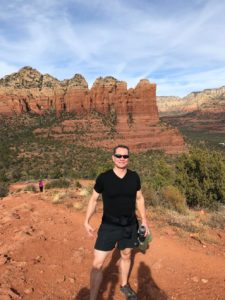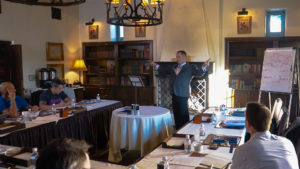If you are anything like me, you have read your share of articles, studies, and analytics that quantifiably prove that repeatedly working long hours does not yield bigger, much less better, results.
Instead, working extended hours for about two weeks seems to be the limit before the detrimental effect of getting less sleep, especially in the context of higher stress, begins to backfire, as this HBR article details. And while an important component of effective business coaching to combat burnout is an ongoing effort, the following are mindset and behavior shifts anyone can adopt, adapt, and apply for immediate improvement.

Tip #1 – Relentless Pursuit of Less
In his book, Essentialism: The Disciplined Pursuit of Less, Greg McKeown makes a compelling and well-researched argument for exchanging quantity for quality.
Approaching every day with the mindset that you are ‘busy’ and ‘overwhelmed,’ then choosing to continue to say ‘yes’ to all that comes your way, is the recipe for modern-day burnout, compounded with work-from-home burnout.
As we embrace our new flexibility, long hours are amplified by the lack of physical boundaries between work and home. Essentialism is the modern approach to Stephen Covey’s ‘Rocks.’
Becoming an essentialist means prioritizing what is on our daily list, doing only those things, and doing them better than anyone. You will accomplish more by completing items completely, on time, and with accuracy, thereby avoiding burnout-error that insidiously creeps in, impacting quality when we are excessively working as a habit.

Tip #2 – Time Limit
For anyone that has played – or watched – a sport, nearly every one of them has a time limit; exceptions to that limit are just that. In the few circumstances where additional time is required, there is still a measurable limit and end to the game.
Time is a fixed resource with no control to change that limit. It is exactly the same for absolutely every single person. How we use the resource is where our choice, and therefore control, exists.
Once you have made your list of essentials (or Rocks, if you prefer), set the time you are allowing yourself to be complete. The discipline of choosing focus in this way comes with significant rewards as the default position for most is to be drawn to the ‘noise’ of email, dm’s, phone calls, and interruptions.
If you were playing a sport and had one period of time to score, you wouldn’t stop for anything else. Don’t allow yourself to do that in your work environment, either.
Identify the task, set the time, and move to completion.

Tip #3 – Book Ends
You might be saying, “Ken, you just don’t understand. I have a BIG job with BIG responsibilities that require a HUGE commitment.”
There was a time when I structured my work life (there was no ‘balance’ in the equation) such that I joined a gym that opened at 4 am to start my day earlier; currently, there are gyms that allow 24-hour access. This allowed me to be at my desk by 6-6:30 am.
From then, I would work until around 5-6 pm to leave at a “normal” time. By the math, it was 11-12 hours per day, or what my dad used to call a “half-day.”
The first thing that changed this demonstrably ineffective habit was that I joined the CrossFit Community. The earliest class available was 5:30, meaning I couldn’t arrive at my desk until 7-7:30 am.
Rather than working later, since I was already notoriously late for dinner, my habits began shifting. Fewer interruptions were permitted, I learned to manage email more effectively and I ensured my meetings were time-bound with an agenda.
And then, we started hosting foreign exchange students; our commitment to them was to create a family unit that included a family dinner every evening. No matter what it took, we all had butts in our seats at 6 pm sharp – without electronic devices or television.
My workday was officially book-ended with a commitment to health and family. Anything that did not get done at the office became “homework” for after dinner. Did that happen? Of course, it did on occasion.
What also happened was that I came to value time in an entirely different way, which helped me see where it was consumed in frivolous ways throughout the workday.
About five years into applying my discipline, a fellow leader commented that I was the “most efficient person she’d ever observed.” High praise created a moment of reflection on what’s possible when we embrace the power of choice.
If you have been feeling busy, overwhelmed, burned out, or frustrated that your work habits stemming from your work ethic are no longer producing the results you used to get (and still want), it may be time to explore how business coaching can help. Step one is to meet with Ken for a 15-minute, no-strings-attached call to see how (or if) we are a fit.
Ken Kilday is the CEO and Founder of Leader’s Cut: The Ken Kilday Coaching Experience. As an executive coach, business strategist, and LinkedIn expert, he founded his company to work with Entrepreneurial Leaders to master organizational processes, communication, and accountability by working individually and with the entire leadership team.
Ken Kilday is an Entrepreneur, Executive Business Coach, Business Strategist, and LinkedIn Expert.




